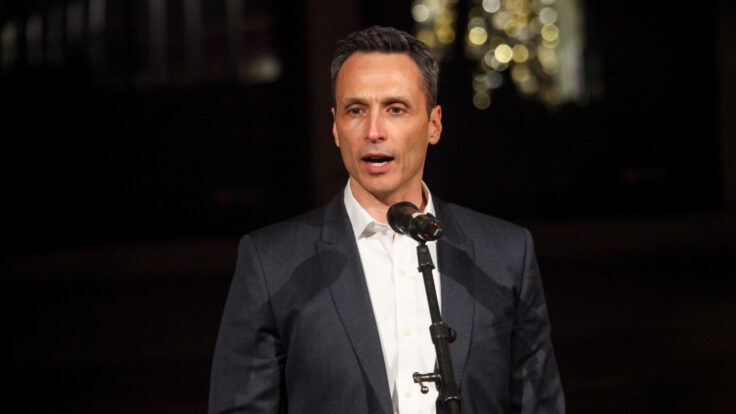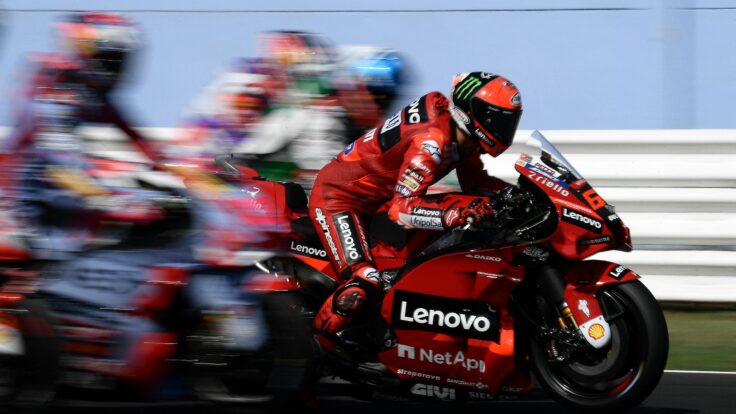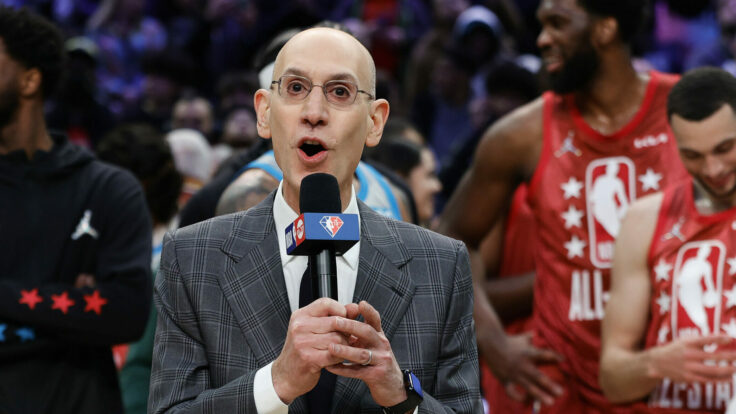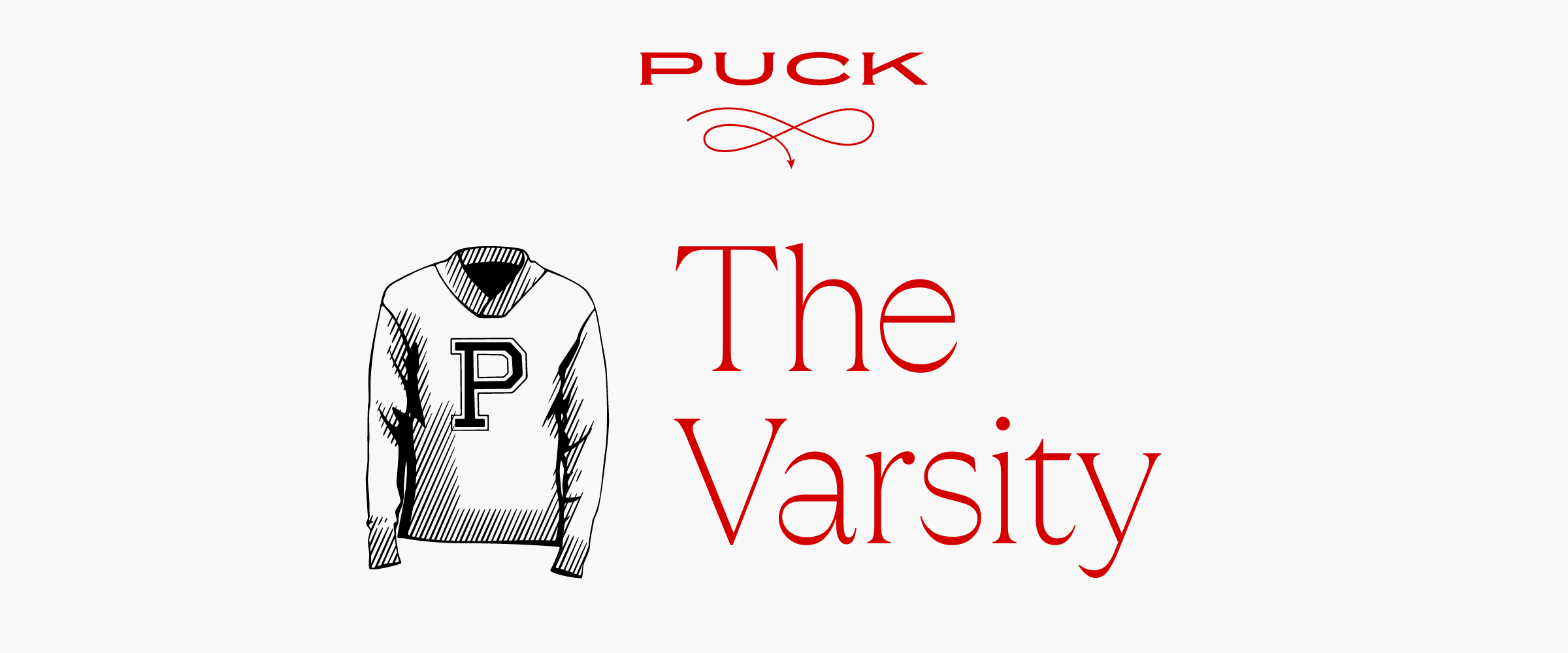 |
|
Welcome back to The Varsity, my twice-weekly private email on all the deals—and rumored deals—in the sports media business. I am back in my hometown of Washington, D.C., following a quick trip to verdant Amherst to interview former CBS Sports chairman Sean McManus, who is the executive in residence at the Mark H. McCormack Department of Sport Management at UMass. You can listen to excerpts from our conversation on my podcast, The Varsity, this Sunday.
Speaking of: Marchand took a break from teaching his weekly Zoom crochet class to join the pod this week. We went deep on the usual suspects—McAfee, Stephen A., Brady, etcetera—and declared early winners in the streaming wars. I almost missed the guy… until he forgot my favorite German biscuit cake and put too much Sweet’n Low in my coffee. (Andrew, just one and a half packets, gently stirred, for crying out loud!)
And if you haven’t yet, check out this excellent Chris Mannix story that gets into the real reasons Woj walked away from his $7 million-a-year ESPN gig. Sure, he was burned out. But it was a cancer diagnosis in March that really, and understandably, prompted Woj’s decision.
Okay, here we go…
|
| Player of the Week: Stephen A. Smith |
|
| In many ways, the Stephen A. Smith deal offers all sides what they want: For Stephen A., who currently makes $12 million per year, the bump to around $20 million in comp will make him the highest-paid talent in Bristol, above not only Pat McAfee but also Troy & Buck. ESPN chairman Jimmy Pitaro, meanwhile, is close to getting this negotiation wrapped up tidily while keeping some distance from the $25 million-per-year ask that had previously been floated. In retrospect, Stephen A.’s ascent is nearly as unlikely as other media stars of this era—McAfee, yes, but also Joe Rogan, the All-In guys, etcetera. He rose from being a beat writer at The Philadelphia Inquirer to wiggling his way into ESPN via a bit part on The Sports Reporters to becoming its top star to making more than many of the athletes that he rants about. (For the record, Marchand was the first with that $20 million per year figure.) More on this below… |
| Down to the J.V.: Mollie Marcoux Samaan |
|
| The fact that Samaan still has a year left on her contract as the commissioner of the LPGA certainly suggests that she was pushed out after an underwhelming three-year run. As I noted on Monday, Samaan has some big wins on her résumé, including doubling the tour’s purse, to $131 million, next year. But she failed to connect with sponsors and other LPGA stakeholders, who believe that the former Princeton athletic director underperformed her peer set amid the burgeoning popularity of women’s sports. |
|
|
- Women’s World Cup bids are in: Despite the extraordinary enthusiasm and deal flow around female professional sports, FIFA recently discovered that the U.S. media rights market for the 2027 and 2031 Women’s World Cup tournaments was not nearly as robust as expected. In a surprising development, neither Amazon nor ESPN nor Warner Bros. Discovery submitted bids, according to several sources. Apple, which recently backed out of a deal for the FIFA Club World Cup, seems like a long shot.
Fox, which has held the English-language rights since 2015, submitted a bid. So did NBC and Peacock. (The NBC-owned Telemundo has held the event’s Spanish-language rights since 2015.) It’s unclear if CBS Sports formally put forward a bid, but my sources suggested that the network was considered a likely contender, given its success with the UEFA Champions League and other soccer properties. (Any CBS bid almost certainly would include Paramount+.)
Sources believe that FIFA will open up a second round of bidding some time soon. Part of FIFA’s pitch is that whoever wins the rights to the Women’s World Cup will have an inside track to get the rights to the Men’s World Cup starting in 2030.
- The streaming wars, cont’d: It’s hardly a surprise that ESPN has decided to make its content, including live games, available on Disney+ —especially since the Venn diagram of ESPN and Disney+ viewers doesn’t overlap much. “One of our priorities is audience expansion,” Jimmy Pitaro told Variety’s Brian Steinberg, “and we love the idea of potentially speaking directly to casual fans and speaking to the very large female audience that is on Disney+.”
Disney, after all, is undergoing the complex process of spreading its sports content across its various streaming assets—D+, Hulu, ESPN+, and the forthcoming Flagship sports streamer—for a cleaner user experience. Bundling is a part of this, but so is simulcasting. ESPN’s decision to simulcast Monday Night Football on ABC is the sort of pan-parentco thinking that will drive the company’s next era. Plus, recent data suggests the value of using sports to grow a streaming audience. Peacock, perhaps the most cited example, is still benefitting from its single January NFL playoff game.
- Manfred’s golden at-bat: My old Varsity podcast with MLB commish Rob Manfred reentered the zeitgeist this week after Jayson Stark wrote a story about the “golden at-bat.” During our conversation, Manfred explained that there was “a little buzz” around the hypothetical concept, which would allow a team to deploy any hitter in their lineup during a clutch situation, regardless of the batting order. It’s a sort of ridiculous video-game-meets-schoolyard idea that might appeal to a younger generation but absolutely grates on old timers. (Kornheiser and Wilbon absolutely shredded the notion on PTI earlier this week.)
Baseball does want to attract younger fans, and the league has been celebrated for pushing through historic changes, like the pitcher’s clock. But fans should not expect a golden at-bat anytime soon. First, Manfred doesn’t seem like a major supporter. (When he mentioned it on my pod, it didn’t feel like he was floating a trial balloon to gauge reaction.) Then there are the logistics. MLB beta-tested the pitch clock and defensive shift bans in the minor leagues for years before they showed up in the majors. Likewise, robot umpires—sorry, automated strike zones—spent ages in development and testing before they were approved for spring training next season. Even if the concept were ready for the minor leagues next season (it’s not), it still would take years for it to come to fruition in the majors.
- A streaming victory: Remember, dear reader, when I mentioned the bizarre milestone, only three short weeks ago, of Amazon’s Thursday Night Football drawing more viewers than Monday Night Football, marking the first time a streaming service had attracted a larger audience than one of the NFL’s top TV partners in the same week? Well, it happened again this past weekend. Amazon’s Chiefs-Raiders Black Friday game averaged 13.5 million viewers, beating ESPN’s Monday night Browns-Broncos game average of 11.9 million. But don’t expect Amazon to outpace ESPN again this season: Disney will simulcast the remaining Monday Night Football games on ABC.
- McManus’s Brady Meter: Seven years ago, former CBS Sports chairman Sean McManus decided to replace the network’s top NFL analyst, Phil Simms, with a very recently retired quarterback who had never before worked in a broadcast booth: former Dallas quarterback Tony Romo. McManus’s decision was second-guessed immediately, particularly since analysts typically get their reps in less-important games before graduating to the top booth. The decision paid off instantaneously, however, because of Romo’s enthusiasm, his willingness to predict plays, and a natural talent for elevating the viewing experience by channeling his inner former pro.
So during our chat for this Sunday’s Varsity podcast, I couldn’t wait to ask McManus about Brady, another former QB who went directly from the field into the top broadcast booth at Fox. McManus was effusive in his praise, saying that Brady has the knack to become an elite analyst. “What I’ve heard from people who work with him is that nobody is working harder than Tom Brady,” McManus said. “He’s going to succeed. When you’re Tom Brady, you make sure you succeed through hard work, learning, dedication. If I were the guys at Fox, I would feel very good about Tom Brady.”
McManus noted that Brady has already mastered the art of keeping his comments short in order to fit them in between plays. “I would tell him to keep being concise. Don’t be afraid to express your opinion. Ex-players sometimes are a little sensitive about criticizing a decision or a play. I would tell him to keep being honest and keep doing what you’re doing. Tom’s going to be just fine.”
|
| And now, a little more on another wealthy and famous talking head… |
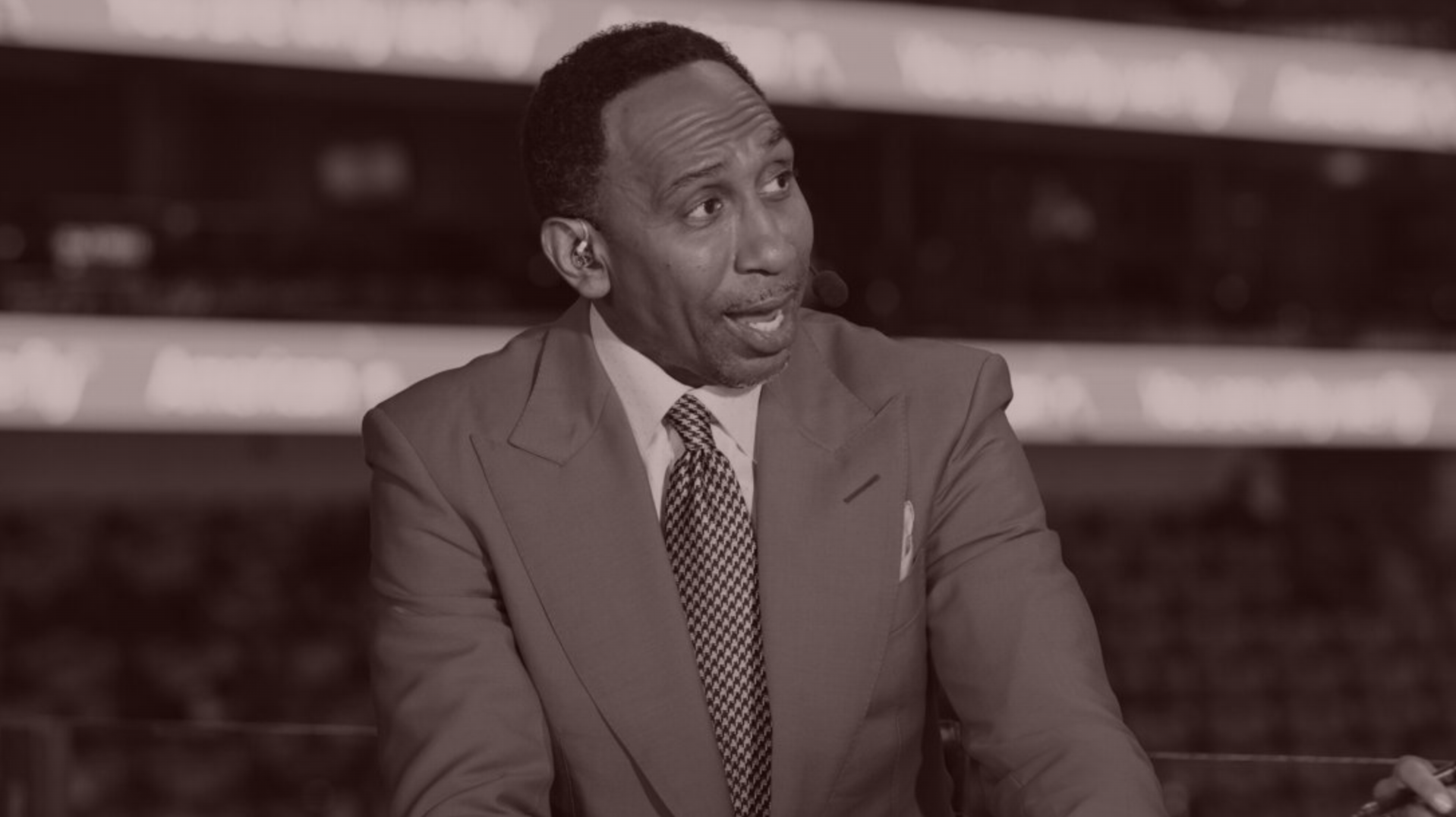 |
| Stephen A. Backs Up the Brink’s Truck |
| The true value of Stephen A. Smith’s soon-to-be historic ESPN deal isn’t the $20 million annual salary or the half-decade term. Rather, it’s what’s not included. |
|
|
|
| As ESPN prepares for its long and complex journey into the streaming multiverse—protecting the cable asset, launching the Flagship lifeboat, buttressing the broader Disney family of O.T.T. products—chairman Jimmy Pitaro seems to have at least settled on a highly nuanced talent strategy. Pitaro and his top lieutenant, Burke Magnus, have eliminated a tier of pricey and not totally necessary stars (Steve Young, Jeff Van Gundy, Max Kellerman, Tony Reali, etcetera); signed and protected a category of more versatile talent (Dan Orlovsky, Mina Kimes, Malika Andrews, plus newbies like Jason Kelce, Nick Saban, and Bill Belichick); and placed some big bets on—and this is such a Bristol term—the needle-movers.
Needle movers have dedicated personal audiences, the ability to generate ratings, and the appeal to lead their fans to a new O.T.T. service. They’re guys like Mike Greenberg and Scott Van Pelt, who helm hours of general interest TV and have individual sport expertise. Needle-movers are game announcers, like Kirk Herbstreit, Joe Buck, and Troy Aikman, who add unique value to prized media rights relationships, as well as insiders like Adam Schefter. Pat McAfee, and his $17 million production deal, is on that list, too, despite the headaches he causes. So are the Manning brothers. But Stephen A. Smith is the biggest of them all.
Stephen A., whose contract expires within the next six months, is arguably the biggest star in a contract year in ESPN history. And as I reported earlier this year, he was looking to potentially double (and then some) his current $12 million salary in a deal worth more than $25 million per year. Given the vanity and egomania that pervades the industry, it was hardly a surprise that Stephen A. wanted to make more than his colleagues, have a reasonably flexible deal structure, and sort of get to do whatever the hell he wanted—like plug into ESPN’s NFL relationship, for instance. A generation ago, ESPN executives might have let this sort of talent test the open market or depart for the verdant pastures of CNNSI, FS1, or even MSNBC. But not in the needle-mover era.
|
|
|
| As Marchand reported in The Athletic, Stephen A. and ESPN are inching toward a deal currently structured at five years and around $20 million per. In many ways, it’s a perfect Goldilocks arrangement: Stephen A. will be the brand’s highest-paid star, but ESPN is not on the hook for the entire salary. ESPN Bet has committed to pay several million dollars of that salary each year. Disney will chip in, too, since the deal specifies that Stephen A. can pitch non-sports ideas to the parentco.
Sources said that Stephen A. would continue with First Take and would provide content for ESPN Bet. ESPN has also agreed to identify opportunities for Stephen A. to contribute to ESPN’s NFL and NBA coverage, though that arrangement appears to be less formal than originally thought. Sources tell me that the two sides are close to signing an agreement, but a few issues still remain. None of those issues is expected to derail the deal, but they could delay it when it ultimately closes.
More importantly, the Stephen A. pact is non-exclusive outside of sports content. If the former Philadelphia Inquirer journalist wants to pursue a path toward broader cultural stardom via projects outside sports, he’ll have Pitaro’s green light. For instance, there are persistent rumors that SiriusXM has put forth a considerable bid for him to host a radio show that would cover similar topics to his current YouTube show. Could Stephen A., who has appeared on Fox News, become some sort of Imus?
All we can say for sure is that this type of concession would have been unimaginable just a few short years ago, in the Skipper era, when ESPN positioned itself as the center of the sports media universe. Alas, now all the large-platform companies getting into sports have prompted some creativity. Pitaro and Magnus clearly believe that they are in a battle for on-air talent, not just from competing sports networks, but from the streamers and social media outlets. As a result, they have become much more lenient about letting their stars produce non-sports programming on other platforms. I don’t know about you, but Marchand can’t wait for the Stephen A. baking show and harpsichord YouTube channel.
|
|
|
| On Stephen A.’s pending deal: “Now, ESPN doesn’t really care if it’s a Bristol-based platform—it just wants to have the biggest stars on their air. That’s a far cry from the inception of the ‘This Is SportsCenter’ marketing campaign, which was designed to paint Bristol as the center of the sports universe.” —A former ESPNer
On Fox’s streaming strategy: “My team buys media (I don’t), but Fox seems to be betting that people will hang on to their bundle because they have football. At what point does the NFL tell them to go fly a kite and take that package to Netflix? Because I’d rather my team buy that than a dying bundle deal.” —A media executive
On a former Fox Sports exec’s email questioning the NWSL’s expansion strategy: “Everyone thinks this is me! Stop taking quotes from Patrick Crakes.”—Another former Fox Sports executive
[Ed. note: Still another former Fox Sports executive Patrick Crakes did not send the original email signed by “A former Fox Sports executive.”]
On cord-cutting: “Last year, I got rid of Comcast after 20-plus years, and through multiple moves, to go with YouTube TV. There were two big issues that Comcast never dealt with: 1. Even when they were losing subs, the price never went down, it only kept going up. Plus, Comcast charges for everything: monthly fees for the cable box and an extra box; a modem.
2. Customer service was terrible. I paused YouTube TV over the summer on the computer. I did the same thing with Comcast, and it took multiple 45-plus-minute calls to get it right. I’d talk to multiple people every time, and I rarely got my problem fixed on the first call. Comcast did always offer more products for me to buy, though. —A Varsity subscriber
|
|
|
Have a great weekend. See you Monday.
John |
|
|
|
| FOUR STORIES WE’RE TALKING ABOUT |
 |
|
 |
|
 |
|
 |
| The F.B.I. Kluster |
| A conversation about Kash Patel and the state of the bureau. |
| JOHN HEILEMANN |
|
|
|
|
|
 |
|
|
|
Need help? Review our FAQs
page or contact
us for assistance. For brand partnerships, email ads@puck.news.
|
|
You received this email because you signed up to receive emails from Puck, or as part of your Puck account associated with . To stop receiving this newsletter and/or manage all your email preferences, click here.
|
|
Puck is published by Heat Media LLC. 227 W 17th St New York, NY 10011.
|
|
|
|



